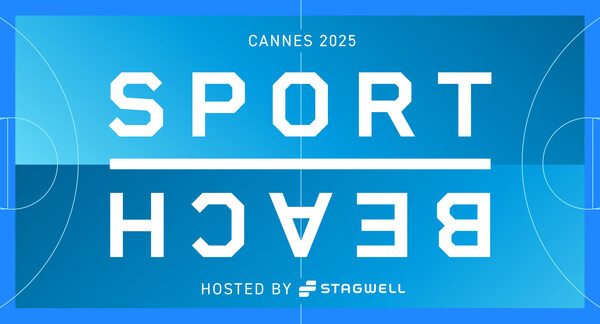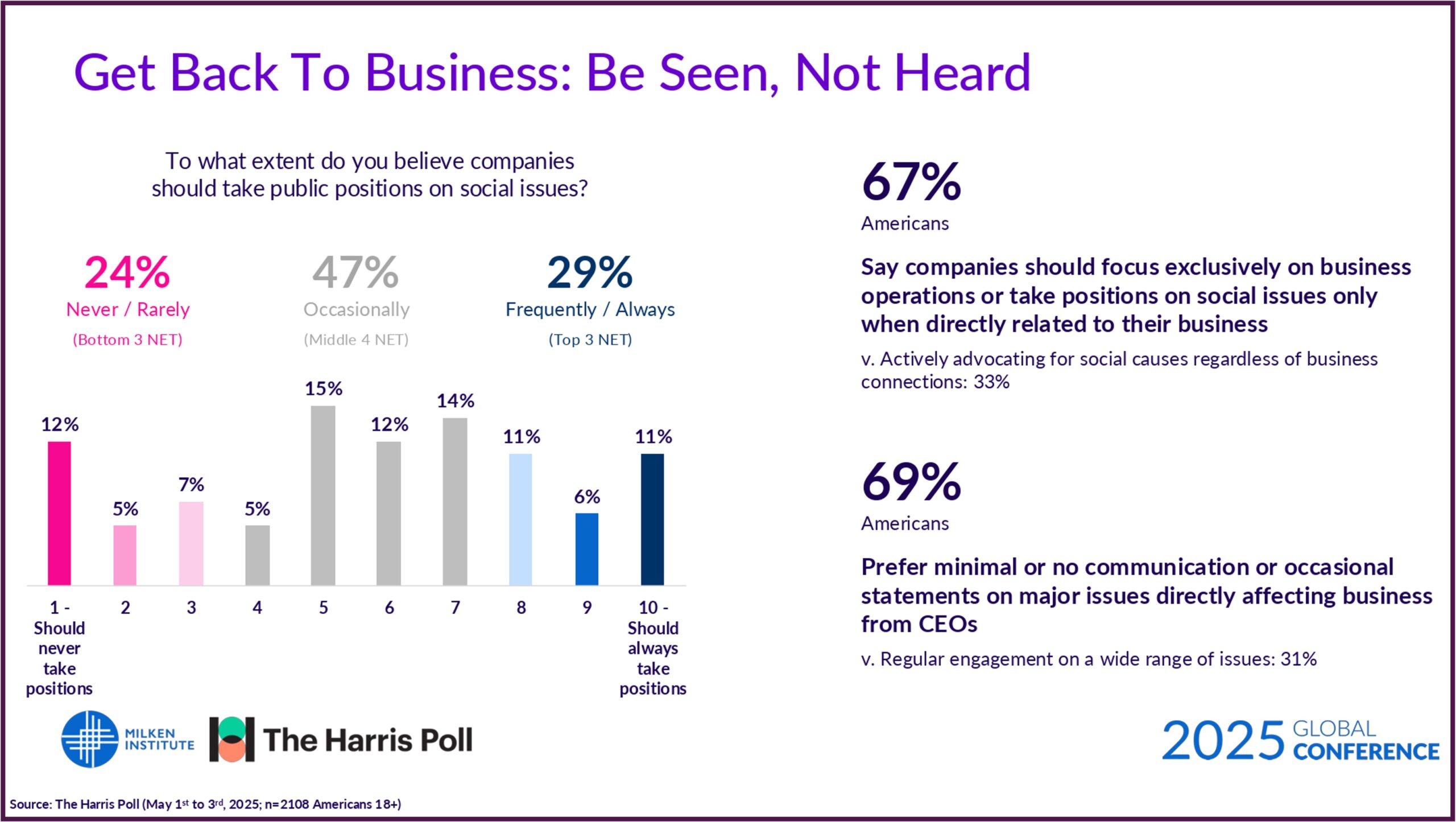By
Ray Day
Stagwell Vice-Chair
CONTACT
hello@stagwellglobal.com
SIGN UP FOR OUR INSIGHTS BLASTS

“It takes 20 years to build a reputation and five minutes to ruin it. If you think about that, you’ll do things differently.” – Warren Buffet
Today, corporate reputation means more than mastery of the marketplace. Reputation is a measure of what all stakeholders – including consumers, employees, shareholders, and more – think about a company.
Contrary to “brand” – which measures a company’s products & services, typically among specific consumer segments, a reputation is earned not created.
Reputation is comprised of your company’s performance + its behavior in the marketplace, reflected through its internal and external marketing communications. When reputation is curated, it has the potential to build business value and can help mitigate risks. Companies with excellent reputations are more likely to garner positive outcomes, such as advocacy, community expansion and purchase intent.
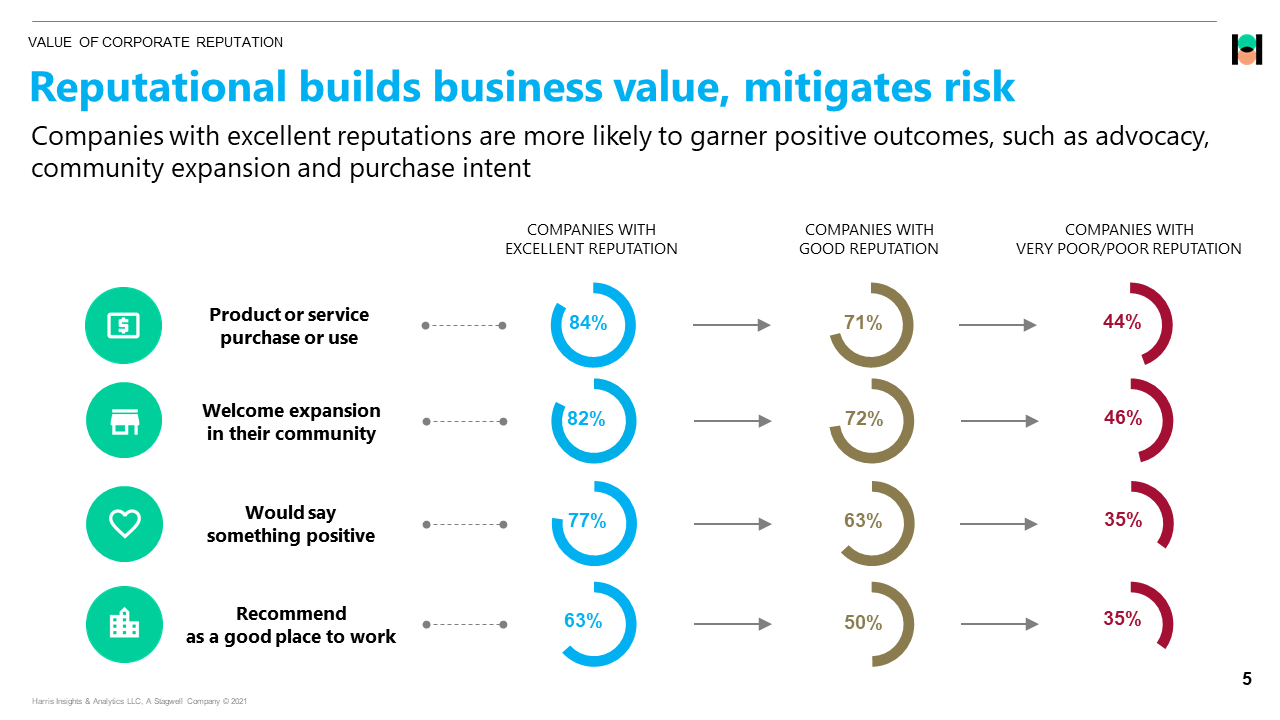
Today’s corporations and CEOs have greater permission from the public to address complex social issues – within bounds. Reputation today is evolving today to reflect more than just a product or service set, but a businesses’ commitment to serve society.
In recent years, geopolitical, economic, and social developments have created a society in transition and turmoil. Consumers have more expectations of corporations in this environment – not least because of declining trust and expectations in institutional actors such as governments and municipalities. As measured by Stagwell’s 2021 Reputation Quotient, brands across nearly every business sector experienced a reputational boost during the height of the pandemic as consumers looked to the private sector for solutions where public officials were failing to create them:
CEOs, and in a limited capacity other star of the C-Suite such as CMOs, are rapidly gaining reputational capital within the market and with consumers. They influence sales, perceived product/service quality, and signal the strength of an organization’s culture. As CEO reputation extends outward, when to exert influence in society becomes more calculated and more important. Americans say CEOs most affect reputation, ethics, and financial success for today’s organizations. CEOs also have a growing public awareness and influence on consumer sales; half of Americans report changing buying habits due to the actions of a CEO.
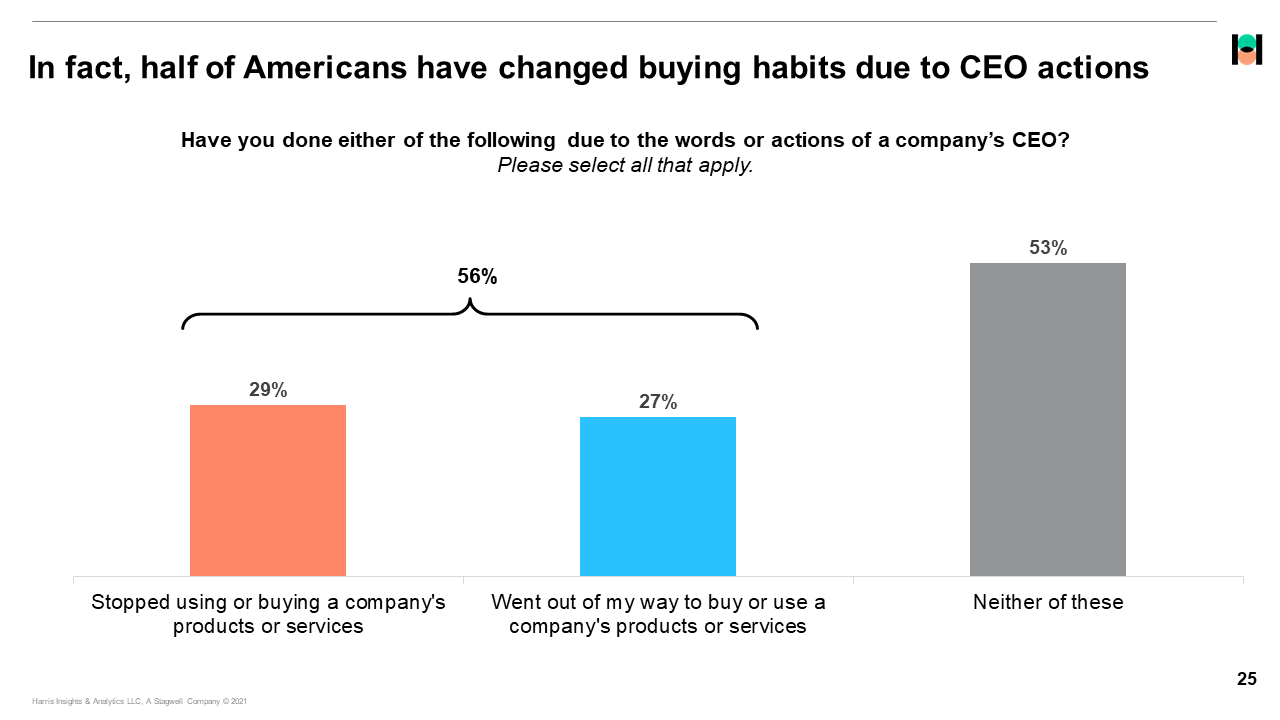
More traditional C-suite players like Jamie Dimon at Goldman Sachs leverage influence in quieter, more sustained ways – Dimon’s annual letter is a bellwether for the future of global financial markets, with wide-ranging through leadership implications for businesses within and beyond the financial services category.
With that reputational capital comes the burden of leadership: the public believes CEOs should stand on issues where they have credibility, not where they don’t have a voice or authority. Ultimately, core values should be the navigator of social issues. Alienation is a risk in a highly polarized society, but so too is the risk of stakeholders who perceive CEOs as indifferent or in conflict with the company’s principles. This is especially true among younger and Black Americans. While standing down is expedient, a generational and cultural divide is growing that will make decisions more difficult and polarizing.
Corporate and CEO reputation is changing quickly. Stagwell is a leader in global reputation tracking and management; learn more about the Reputation Quotient, an annual collaboration between Stagwell, Axios, and The Harris Poll tracking the most visible companies in America. Register to receive our 2022 research when it releases in May.
Related
Articles
In the News, Marketing Frontiers, Press Releases
May 13, 2025
MULTIVIEW LAUNCHES AUDIENCEVIEW: THE ONLY FIRST-PARTY B2B AUDIENCE DISCOVERY PLATFORM FOR ASSOCIATION MEDIA
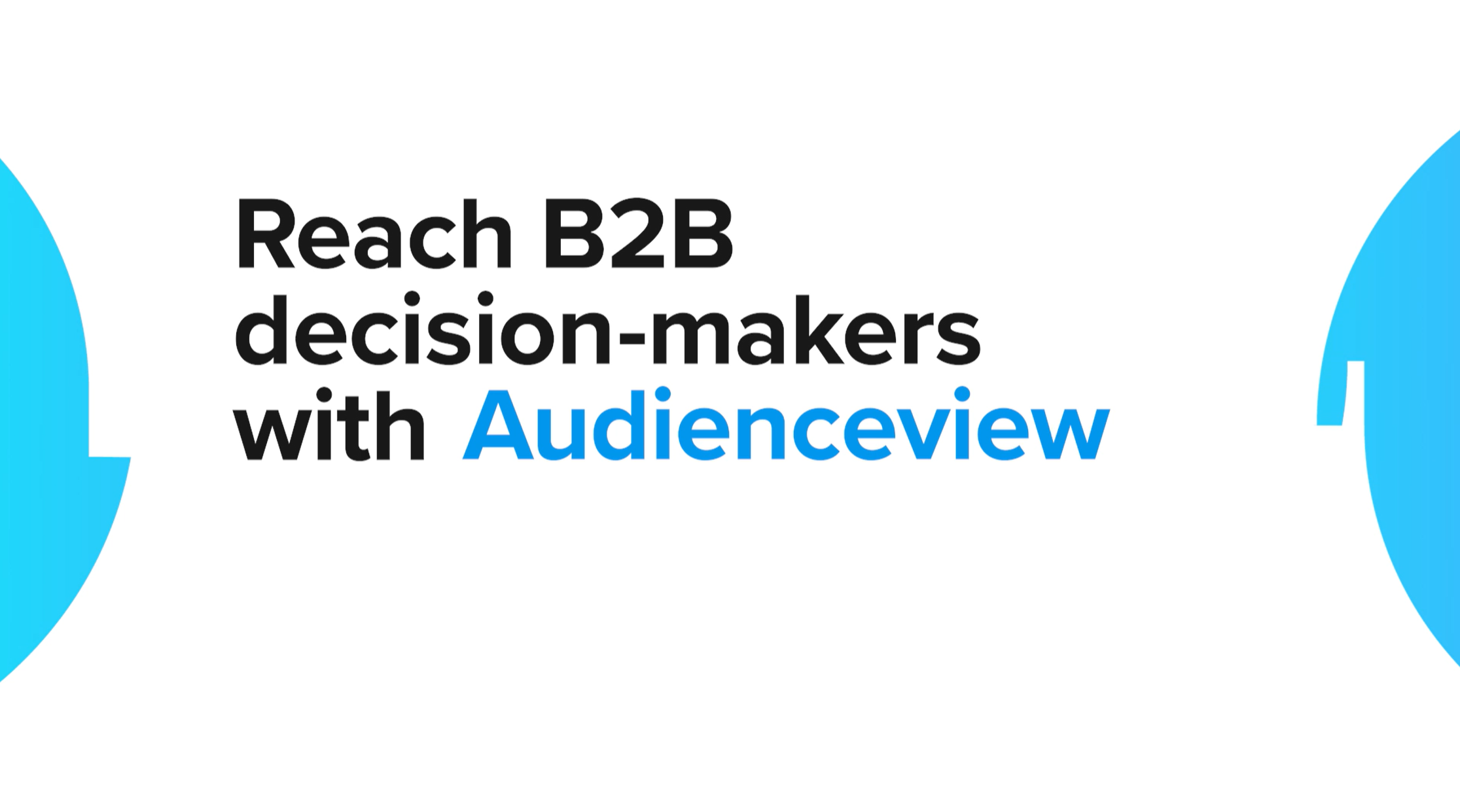
Acquisition, In the News, Press Releases
May 06, 2025
Stagwell (STGW) Acquires Experiential Marketing and Creative Agency JetFuel
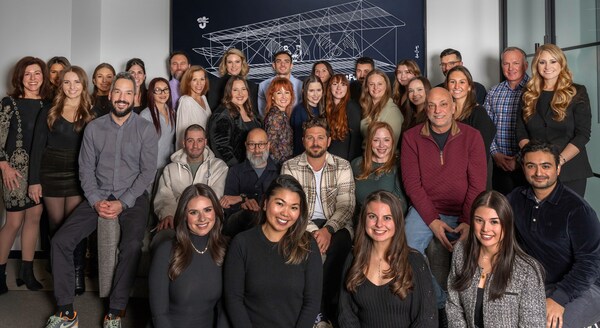
In the News, Marketing Frontiers, Press Releases, Stagwell Marketing Cloud
Apr 02, 2025
The European Commission Expands its Partnership with UNICEPTA by PRophet to Include Media Analysis

Newsletter
Sign Up
Welcome to the second edition of Hitting the Mark – a monthly analysis of developments at the intersection of business, marketing, and politics meant for the modern C-Suite. This month’s topic? Inflation.
Inflation is in many ways the most pernicious of economic problems because it affects so many people at the same time. Inflation is at its highest rate since the early 1980s, and, as I wrote recently in the New York Times, “Many Americans under 60 have relatively little experience with anything but comparatively low fuel costs, negligible interest rates, and stable prices. Virtually overnight these assumptions have been shaken.” Consumers are already changing their behavior, becoming more cautious and pessimistic about the state of the economy. All of those COVID savings are being eaten up through the mystery of runaway higher prices.
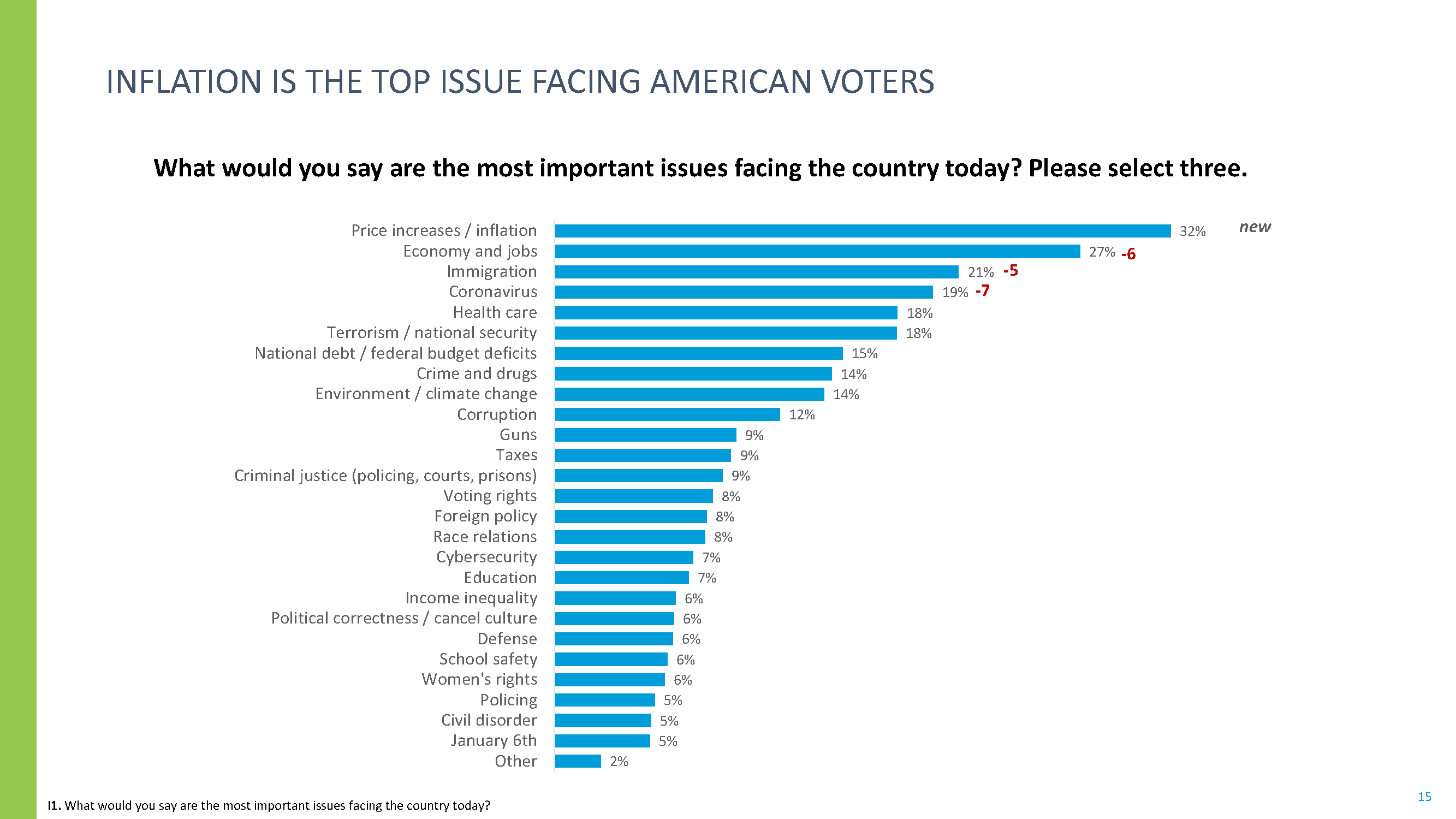
Most marketers have some real choices in how to respond to inflation and the goal is to be on the side of the consumer during these more difficult economic times.
Of course, the easiest solution is simply to raise prices. It’s no longer 10 cents for a pack of gum; one bellwether of higher prices is the cost of treats like chocolate and spearmint. In 1974 a pack of 7 sticks of gum cost 15 cents. That probably does not even cover the sales tax on a package of gum today. Chocolate is a luxury and luxuries have the most elastic pricing, so they generally have the most room to simply pass on cost increases, so don’t expect to pay the same at the Godiva store.
Other companies have tried hard to conceal price increases by simply reducing the quantity. Cereal companies are famous during inflationary times for simply taking an ounce or two out of those cereal boxes. Consumers can easily miss this shrinkage but go too far and expect a backlash.
Perhaps the best way to get on the side of consumers during this time is to offer bigger units at lower prices. This is why Sam’s Club and Costco generally do better during these times, as their business model is all about delivering more value for less.
Inflation is of course great for products that are perceived as keeping pace with inflation. No product is known for holding its value more than gold – expect the airwaves to be filled with ads that sell gold as the one true hedge against rising prices.
Fast food prices and their consumers are super sensitive to inflation. As the McDonald’s dollar menu inches up from $1, to $2, to $2, its competitors have done a great job advertising $5 fill-up boxes that are brimming with food. These “inflation busters” become the perfect partners to penny-pinched consumers. While prices for organic groceries soar, families know they can rely on these restaurants to remain affordable.
What does this mean for marketing?
Growth slows during inflationary times, so marketing will also be more about fighting for market share than selling new products to first-time consumers. This means that effective competitive marketing will be a lot more useful for brands. Especially when consumers are motivated by cost-saving, nothing can be quite as powerful as reminding them of the superior value of your business versus competitors.
It’s important to remember that value is not always the same as cost. I once ran advertising on behalf of Microsoft against Linux. Linux was difficult to compete against because the company was giving away some of its software for free. We created the concept of the “total cost of ownership” and showed that the free offering, over time, would be more costly than paying Microsoft. This campaign labeled “Get the Facts” was a huge success.
Focus is important during inflationary times. The consumer is once again king, and behaving somewhat like a taxpayer, skeptical of companies who are focused on giving their money away for causes because they feel like they are being called upon to finance these programs out of pocket when they buy goods and services. Companies with a heavy focus on social programs should evaluate whether they will now be seen as out of step with the needs of consumers. While helping soup kitchens might still be a popular idea during inflationary times, funding the opera might raise eyebrows, and throwing a huge fashion show might alienate consumers at this time.
Now is the time to stop simply watching inflation worsen and pick the right strategy for your company, whether it is reducing package sizes, creating affordable bundles, raising costs, or digging into competitive advertising to fight for market share. As for me? I have to go load some gold bars into my car…
Up next in our Hitting the Mark column? The pandemic, inflation, the Russia-Ukraine conflict, political crises – all these issues raise the importance (and trickiness) of “brand leadership” in our modern era. As we noted in Stagwell’s 2021 research on brand reputation, those perceived as delivering solutions to the pandemic received a major reputational boost over the past few years. Today, a majority of voters are not confident in either the Biden administration (55%) or the Federal Reserve’s (56%) ability to fight inflation. Brands won’t deliver the silver bullet to America’s inflation woes but adapting strategy to give consumers a lifeline amid economic stress can go a long way towards building reputational capital.
Stagwell’s 2022 Reputation Quotient, our annual ranking of the 100 most visible companies in America, is set to release in late May. I look forward to sharing an updated picture of the state of corporate reputation and brand leadership then.
Mark Penn
Related
Articles
In the News, Marketing Frontiers, Press Releases
May 13, 2025
MULTIVIEW LAUNCHES AUDIENCEVIEW: THE ONLY FIRST-PARTY B2B AUDIENCE DISCOVERY PLATFORM FOR ASSOCIATION MEDIA

Newsletter
Sign Up
NEW YORK – May 3, 2022 – Stagwell (NASDAQ: STGW), the challenger network built to transform marketing, today released its 2021 Annual Report, highlighting substantial growth propelled by a uniquely high concentration of digital capabilities; strategic investments and acquisitions supporting digital and global growth; and a collaborative organizational model designed to meet the demands of larger clients in need of true integrated marketing services. Download the report here.
“In a digital economy, every screen is a canvas, every experience a data collection point, and every platform a new place for brand interaction. Brands deserve a digital-first alternative marketing network that drives business growth by connecting culture-moving creativity with leading-edge technology,” said Stagwell Chairman and CEO Mark Penn. “We strongly believe the steps we have taken to align Stagwell’s operations to support this transformation created a lasting platform for growth and shareholder value.”
Stagwell has had breakthrough performance since the combination with MDC Partners Inc., forming Stagwell Inc. in August 2021. This includes $2 billion in combined pro forma revenue for 2021. Penn’s annual CEO letter discusses Stagwell’s 2021 financial performance in the context of five transformative approaches to global marketing services delivery:
- Digital transformation and innovation, helping clients reposition their enterprises for growth in the new digital economy. Innovation shops Code and Theory, GALE, Instrument, and YML spotlight path-breaking work for Amazon Ads, MilkPEP, Google TV, Polestar and more within the report.
- Scaling creative performance for modern brands, bringing world-class creativity and modern media together to drive powerful campaign results. Work from 72andSunny for Tinder/Match Group; Anomaly for Expedia; Assembly for Nike; Doner for CUE Health; Forsman & Bodenfors for Polestar; and more illustrate ways Stagwell unleashes creative effectiveness for the modern marketer.
- Building integrated marketing solutions that align the right mix of core marketing capabilities and specialist expertise for ever-more-complex clients, exemplified in Sloane & Co., KWT Global, TEAM Enterprises, and GALE’s collaborative marketing efforts supporting Hertz’s vision for the future of electric vehicles.
- Agile global expansion, fueled by Stagwell’s Affiliate Program spanning 50+ partners across Latin America, the Middle East, Africa, Asia-Pacific, and Eastern Europe, and investments in market leaders Instrument and Goodstuff.
- Product innovation through the Stagwell Marketing Cloud, a proprietary product suite of SaaS and DaaS solutions that leverage artificial intelligence, machine learning, and mixed-reality business transformation for in-house marketers. SMC’s services span audience segmentation, influencer marketing, public relations, immersive experiences, and brand insights. The newest platform in the Cloud, ARound, helps brands create, manage, and scale augmented reality experiences for live events and retail.
To read the full report, please visit Stagwell’s website. Viewers can use QR codes throughout the document to explore referenced case studies.
About Stagwell Inc.
Stagwell is the challenger network built to transform marketing. We deliver scaled creative performance for the world’s most ambitious brands, connecting culture-moving creativity with leading-edge technology to harmonize the art and science of marketing. Led by entrepreneurs, our 10,000+ specialists in 34+ countries are unified under a single purpose: to drive effectiveness and improve business results for their clients. Join us at www.stagwellglobal.com.
PR Contact:
Beth Sidhu
pr@stagwellglobal.com
+1. 202.423.4414
IR Contact:
Michaela Pewarski
ir@stagwellglobal.com
646-429-1812
Related
Articles
In the News, Investments & Financials, Press Releases
May 08, 2025
STAGWELL INC. (NASDAQ: STGW) REPORTS RESULTS FOR THE THREE MONTHS ENDED MARCH 31, 2025

In the News, Investments & Financials, Press Releases
Apr 22, 2025
Stagwell (STGW) Announces May Investor Conference Schedule

In the News, Investments & Financials, Press Releases
Apr 17, 2025
Stagwell (STGW) Schedules Webcast to Discuss Financial Results for the Three Months Ended March 31, 2025

Newsletter
Sign Up
CONTACT
hello@stagwellglobal.com
SIGN UP FOR OUR INSIGHTS BLASTS
This piece is part of Stagwell’s Marketing Frontiers series on the Creator Economy, Influencer Marketing, and Social Commerce.
From new monetization channels for Creators to content formats to experiment with, Web3 will unlock a new chapter for the Creator Economy. Just as fast as influencer marketing hit its stride, this next era of the internet is forcing the players of the modern Creator Economy to rethink how influence can drive results. Authenticity, deep consumer-to-creator connections, and compelling content will still be the bread and butter of good influencer strategy. But how will Web3’s focus on a decentralized internet impact the ways creators, agencies, and brands interact? How can Creators help brands explore meaningfully in the budding Metaverse – and bring consumers along for the journey? Explore POVs from Stagwell’s marketing leaders on where the Creator Economy is headed in the Metaverse.
A New Class of Creators
John Doyle, Colle McVoy
It’s difficult to imagine how the Metaverse will transform human existence writ large, much less how it will impact creators. To anchor speculation in something solid, it’s helpful to focus on three current aspects of the creator economy that may change the most when we turn on headsets, join in the Metaverse, and drop out of our IRL lives: expression, intimacy, and ownership.

Expression — Today, we may not think of event planners, architects, industrial engineers or sound designers as creators because our current social media access points don’t reward this type of talent. But in the Metaverse, it’s easy to imagine a new class of creators who at once will be able to plan an event, design an environment in which to hold the event (including lights and sound), and sell proprietary virtual products.
Intimacy — Following creators on social can feel like keeping up with a friend. As we interact in immersive, live experiences where creators exist in front of our goggled eyes, an already intimate experience will likely become even more so.
Ownership — The Metaverse will likely rewire the economics of how creators get paid. In a business with so many competing players — including tech platforms, talent agencies, and brands — creators have been subject to unfair business practices. They have formed non-profits to help restore balance in a still-forming industry. Like reinvented Bowie bonds, creators and their fans may co-own a creator’s work and the value it creates — in the spirit of Irene Zhao, an Instagram Influencer who explains why she created a DAO token to offer her fans.
Web3: Enter the Age of Virtual Avatars
Donetta Allen, HUNTER
One of the issues that most creators face today is the indirect way that they earn compensation for work – they work tirelessly to excel in the industry and in turn increase the ad revenue and stock prices for the social platforms that can flip the switch on an algorithm at any time, significantly impacting the potential income of creators. Web3 and its central premise of creating a decentralized internet will provide a more direct link between creators and their fans. Expect this to increase the influence of creators who take steps to establish their footholds in this space now. These technologies, including virtual and augmented reality, machine learning, artificial intelligence, blockchains, smart contracts, and cryptocurrencies, provide the tools to be fairly compensated for their work and allow creators and their communities to curate and claim ownership of their creations.

Ultimately, new business models centered in Web3 will lead to a more immersive, decentralized metaverse. As digital worlds evolve beyond simple games and marketing campaigns into fleshed-out worlds with avatars, digital goods, and experiences, the curious will seek guides to make the most of the experience, just as consumers currently look at Pinterest to plan a trip, or purchase items based on trending TikTok videos. Smart creators will adapt and prepare to meet – or lead – us in these digital spaces, pushing the boundaries of their current content and tapping emerging technology with the mindset to sell (or gift) it directly to their fans. Can you imagine a personalized birdwatching tour with a creator in a yet-to-be-created digital world or the opportunity to own the copyright of the first-ever video your favorite creator edited in the Metaverse? These unbelievable experiences are here, and creators and collaborative brands will lead the way in making these attainable to those who are currently only passively curious or dismissive of the vast opportunities – and income – available in future digital worlds.
Web3 and the Power of Nano-Influence
Sophia Fraioli, KWT Global
The future and the way we connect is changing rapidly. The terms Web3, NFTs, and cryptocurrency inherently bring up many questions surrounding money and how we will “pay to play” in the digital future. To adequately talk about Web3, we first need to understand Web1 and Web2. While Web1 focused on the consumption of information, Web2 concentrated on creating and sharing information under a 3rd party-controlled system. Web3 has set to disrupt this system, bringing power back to creators and individuals by decentralizing the internet.

What does that mean for the creators and influencers that dominate the spaces Web2 has created? Estimates suggest U.S. influencer marketing will surpass $4 billion in 2022, leaving some to wonder if the practices and apps of Web2 will fall by the wayside once the “switch” to Web3 has become a reality.
However, the switch for these influencers from Web2 to Web3 may not be as complicated as it seems. With the decentralization of the internet that Web3 promises to bring, there are new opportunities for creators to make a name for themselves outside of the platforms that made them famous. DAOs (Decentralized Autonomous Organizations) will allow creators to make money directly from their fan base without the middleman profiting off their efforts. NFTs, tokens, and cryptocurrency will enable fans to fund creators and potentially upend the existing relationship between creators and brands.
Trustworthiness is increasingly one of the most critical aspects of an influencer’s success, and with that in mind, it’s the nano-influencers who may gain the most under this shift. Authenticity is at the core of what Web3 promises. It will potentially be a place away from the control and persuasion of big business and those who find success in this new digital world will be those who are trusted most by their audiences.
Many say that those who profit most under Web2 will likely profit the least under Web3, but as Web3 unfolds, it’s up to agencies to pay close attention to this shift and see where we can fit into this new space. The best practices we have lived by for all brands in Web2 may be far more complicated in the Web3 space. NFTs will become a huge revenue source for some brands, while others may want to focus instead on activating their presence and engaging in the Metaverse. The change to Web3 won’t be a “light-switch” moment, but now is the time to start discussing and advising clients to be ready and stay close to their agencies as we look to succeed in this new digital universe.
Related
Articles
In the News, Marketing Frontiers, Press Releases
May 13, 2025
MULTIVIEW LAUNCHES AUDIENCEVIEW: THE ONLY FIRST-PARTY B2B AUDIENCE DISCOVERY PLATFORM FOR ASSOCIATION MEDIA

Acquisition, In the News, Press Releases
May 06, 2025
Stagwell (STGW) Acquires Experiential Marketing and Creative Agency JetFuel

In the News, Marketing Frontiers, Press Releases, Stagwell Marketing Cloud
Apr 02, 2025
The European Commission Expands its Partnership with UNICEPTA by PRophet to Include Media Analysis

Newsletter
Sign Up
By
Jen Wood
SVP, Integrated Marketing
Allison+Partners
CONTACT
hello@stagwellglobal.com
SIGN UP FOR OUR INSIGHTS BLASTS

When NIL legislation became law in July 2021, it opened the floodgates for college athletes to partner with companies and monetize their success. Historically, NIL opportunities were talked about in terms of appearances and autographs. But unsurprisingly, the bulk of all NIL deals to date have leaned on the success of digital solutions from social media posts and content to NFT creation.
The first nine months of this marketplace have seen a flurry of activity, but have also exposed a few opportunity areas:
- Despite NIL legislation being touted as benefitting all college athletes, recent data from the platform Opendorse shows 51.1% of all NIL compensation has gone to college football players and 72.6% of all compensation has gone to male athletes.
- Many experts say this imbalance is a result of systemic inequities that exist in sports. Brands could help correct this imbalance by purposefully crafting NIL programs that highlight a diverse representation of athletes across both men’s and women’s sports.
- Even though there’s a desire from all stakeholders to have uniform NIL standards, there’s currently no governing body overseeing this. Depending on your industry, it’s still a bit of the Wild West in terms of who you can partner with. Rules differ by college and conference, leading some conferences to allow NIL partnerships with alcohol and sports betting companies, for instance, while other conferences and schools do not.
- Brands must do their due diligence before approaching an athlete and hire an agency, especially if they’re in a highly regulated industry, to help navigate the constantly changing landscape and make recommendations around the athletes who can help achieve their goals.
- There is great variability in the savviness and experience of those negotiating these deals, with some athletes represented by traditional agents and other athletes left to negotiate on their own. Some universities, such as Ohio State’s NIL Edge Team, have formed expressly to help athletes navigate this void. This creates inconsistencies in how services are priced and opens the door for certain athletes to be taken advantage of.
Partnering with a college athlete, as with any influencer, comes with risk. Not only are proper vetting and contract structure essential to a successful partnership, but athlete deals have more visibility than traditional influencer relationships. This heightens the opportunity for brands to be called out for unfair practices. Using tools, such as A+P’s Influencer Impact Score, helps provide consistent vetting and pricing guidance to ensure each deal is approached equitably.
One thing is for certain – the NIL marketplace’s size and influence will continue to grow. And athlete brand-building efforts will continue to be a huge focus, taking an even larger role in recruitment efforts. Not only will colleges seek to recruit college athletes who are already influencers and can bring that follower base to their school, but they’ll also look to market their institutions’ ability to help athletes build their personal brand by playing at the university. Expect athletes across all college sports to become savvier about their marketing potential and create an exponentially larger industry marketplace.
Jen Wood is senior vice president of Integrated Marketing at Allison+Partners. She’s spent the past 10-plus years of her career in Sports Marketing and Sponsorships overseeing all aspects of her clients sports marketing efforts – from sponsorship strategy development and partner identification, to negotiating multi-million-dollar sponsorship deals with collegiate and professional sports organizations and athletes, partnership activation, and ultimately measuring asset utilization and performance. She’s passionate about the opportunities sports marketing provides and is always ready to chat with an interested brand.
Related
Articles
In the News, Marketing Frontiers, Press Releases
May 13, 2025
MULTIVIEW LAUNCHES AUDIENCEVIEW: THE ONLY FIRST-PARTY B2B AUDIENCE DISCOVERY PLATFORM FOR ASSOCIATION MEDIA

Acquisition, In the News, Press Releases
May 06, 2025
Stagwell (STGW) Acquires Experiential Marketing and Creative Agency JetFuel

In the News, Marketing Frontiers, Press Releases, Stagwell Marketing Cloud
Apr 02, 2025
The European Commission Expands its Partnership with UNICEPTA by PRophet to Include Media Analysis

Newsletter
Sign Up
Global Affiliate Brand New Galaxy joins the challenger marketing group to accelerate connected commerce and digital transformation for global brands; will operate as part of Stagwell Media Network
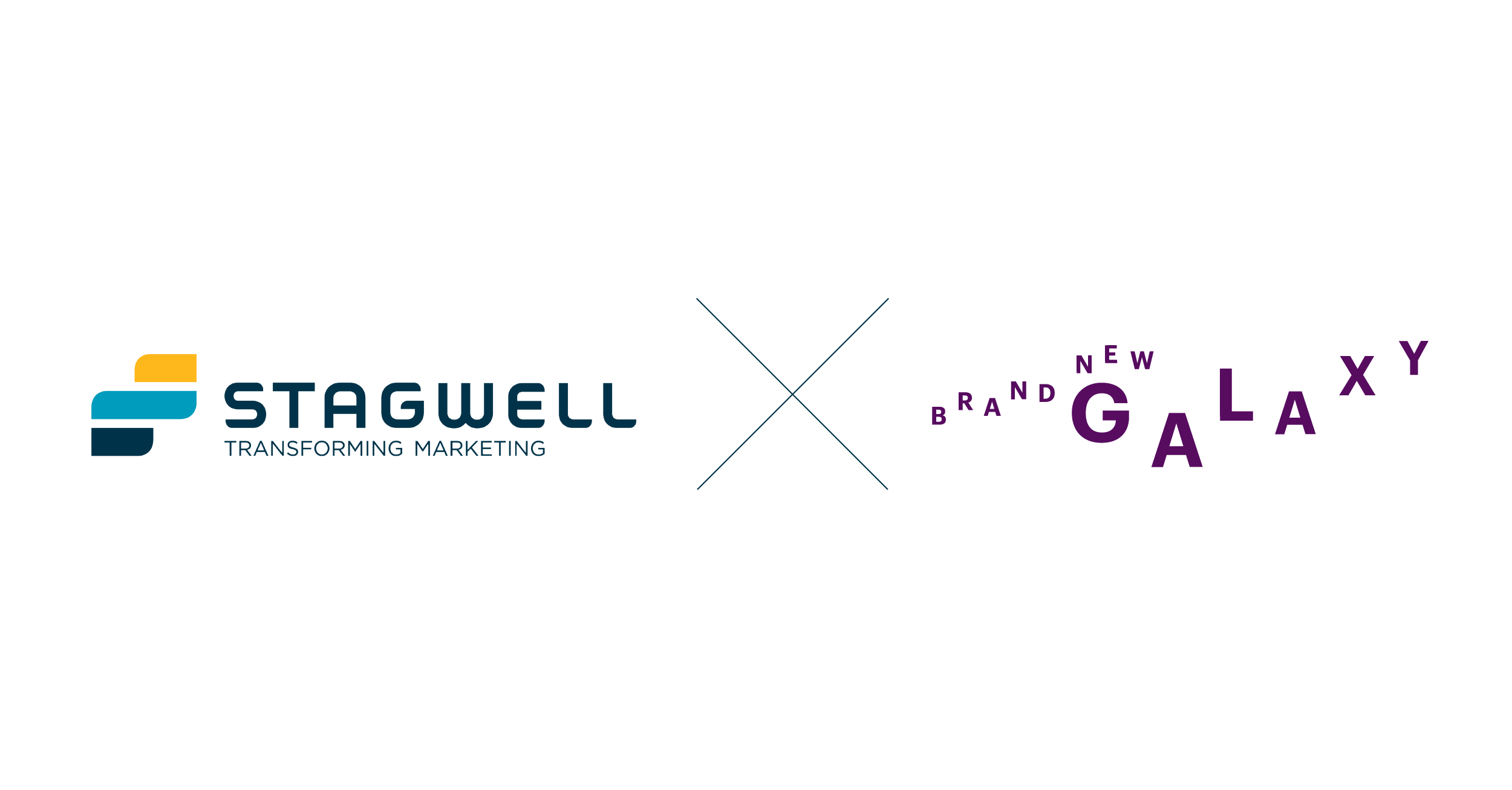
New York, NY & Warsaw, PL – April 21, 2022 (NASDAQ: STGW) – Stagwell, the challenger network built to transform marketing, today announced the acquisition of Brand New Galaxy (BNG), a leading provider of scaled commerce and marketplace solutions for 150+ global brands and 500+ e-retailers worldwide. With 600 experts across Europe, MENA, and the United States, BNG adds deep, digital-first specialization in connected commerce solutions, scaling Stagwell’s broad e-commerce capabilities to service more complex global clients. BNG has served as a partner of Stagwell via its Global Affiliate Program since 2021 and is the first acquisition Stagwell has made of one of its affiliates.
“We are pleased to welcome Brand New Galaxy to the Stagwell platform, expanding the reach of our global e-commerce offerings. Their state-of-the-art e-commerce and digital transformation technology is another reason clients are choosing Stagwell over traditional holding companies,” said Mark Penn, Chairman and CEO, Stagwell.
BNG will join the Stagwell Media Network, a global community of leading omnichannel agencies that collaborate to deliver future-facing solutions driven by digital, data, technology, and media expertise. In addition to complementing Stagwell’s data-led digital transformation capabilities, BNG offers a range of tailored solutions for accelerating end-to-end multimarket commerce, based on international insights that translate into local market opportunities.
“It is incredibly exciting to welcome Brand New Galaxy and their leadership teams to Stagwell Media Network,” said James Townsend, Global Chief Executive Officer of Stagwell Media Network and its global media agency, Assembly. “Their deep and extensive expertise in all things connected commerce sits in perfect complement to our growing portfolio of omnichannel media agencies. The addition of BNG is the natural and front-footed next step for our network to further empower the modern marketeer with more cohesive and integrated solutions across the marketing services spectrum.”
As part of Stagwell Media Network, Brand New Galaxy will continue to go to market under the BNG brand as well as collaborate with other members of the Stagwell Media Network.
Piotr Morkowski, CEO of Brand New Galaxy Holding said, “BNG was born as an ecommerce-native business and over the last five years of incredible growth, we have built a set of unique, world-class capabilities to support our global clients across the entire path to purchase. Building a global business of 600 experts in less than five years is no small achievement, but we are hungry to do much more. Joining forces with Stagwell Media Network at this stage in our journey as part of an integrated go-to-market approach is the best way for us to grow even faster and deliver on our ambitions.”
Stagwell Media Network is now home to more than 3,500 experts distributed globally across more than 20 countries and 40 offices, managing close to $5 billion in media. The Network offers omnichannel media, led by data and digital expertise that challenges the antiquated media models of legacy advertising giants. The BNG acquisition follows the January 2022 acquisition of Goodstuff Communications, one of the United Kingdom’s leading independent media agencies, supporting Stagwell’s scale and global footprint with local activation.
The terms of the deal were not disclosed.
###
About Stagwell Inc.
Stagwell is the challenger network built to transform marketing. We deliver scaled creative performance for the world’s most ambitious brands, connecting culture-moving creativity with leading-edge technology to harmonize the art and science of marketing. Led by entrepreneurs, our 10,000+ specialists in 34+ countries are unified under a single purpose: to drive effectiveness and improve business results for their clients. Join us at www.stagwellglobal.com.
About Stagwell Media Network
Stagwell’s Media Network is a group of leading omnichannel agencies home to more than 3,500 experts with an expansive global footprint across 40+ offices in 20 countries, managing close to $5 billion in media. Agencies include Assembly, Brand New Galaxy, MMI Agency, Goodstuff and Grason, creative consultancy GALE, B2B specialist Multiview, multi-lingual content agency Locaria, and travel and media experts Ink. The network offers marketers a more dynamic partner for global B2B and B2C solutions spanning data, technology, media, and creativity aimed at accelerating business growth for brands worldwide.
About Brand New Galaxy
Brand New Galaxy is a fast-growing leading provider of marketing and technology solutions built to drive commerce and digital transformation for brands. Founded in Warsaw, Poland, in 2017, BNG has grown to 600+ employees with offices in Europe, North America, and the Middle East. BNG has been named “Debut of the Year 2018”, “Success of the Year 2019 & 2020,” and “Growth of the Year 2021” by PRESS magazine’s prestigious agency ranking, proving its position as a dynamic global agency. BNG’s data-driven approach makes brands better connected with consumers in complex marketing and technology ecosystems. This gives more than 150 brands and Fortune 500 clients a true strategic partner, both on a global and local level.
Related
Articles
In the News, Investments & Financials, Press Releases
May 08, 2025
STAGWELL INC. (NASDAQ: STGW) REPORTS RESULTS FOR THE THREE MONTHS ENDED MARCH 31, 2025

In the News, Investments & Financials, Press Releases
Apr 22, 2025
Stagwell (STGW) Announces May Investor Conference Schedule

In the News, Investments & Financials, Press Releases
Apr 17, 2025
Stagwell (STGW) Schedules Webcast to Discuss Financial Results for the Three Months Ended March 31, 2025

Newsletter
Sign Up
Originally released on
CONTACTS
PR Contact
Beth Sidhu
pr@stagwellglobal.com
202-423-4414
IR Contact
Michaela Pewarski
ir@stagwellglobal.com
646-429-1812
NEW YORK, NEW YORK, APRIL 20, 2022 – Stagwell (NASDAQ: STGW) announced today the Company will report financial results for the three months ended March 31, 2022 on Friday, May 6, 2022, before the market open.
Stagwell will host a video webcast to review those results the same day at 8:30 AM (ET). To register and view the webcast, visit this link.
A replay of the webcast will be available following the event at Stagwell’s website, https://www.stagwellglobal.com/investors/.
About Stagwell Inc.
Stagwell is the challenger network built to transform marketing. We deliver scaled creative performance for the world’s most ambitious brands, connecting culture-moving creativity with leading-edge technology to harmonize the art and science of marketing. Led by entrepreneurs, our 10,000+ specialists in 34+ countries are unified under a single purpose: to drive effectiveness and improve business results for their clients. Join us at www.stagwellglobal.com.
IR Contact:
Michaela Pewarski
ir@stagwellglobal.com
646-429-1812
PR Contact:
Beth Sidhu
pr@stagwellglobal.com
202-423-4414
Related
Articles
In the News, Investments & Financials, Press Releases
May 08, 2025
STAGWELL INC. (NASDAQ: STGW) REPORTS RESULTS FOR THE THREE MONTHS ENDED MARCH 31, 2025

In the News, Investments & Financials, Press Releases
Apr 22, 2025
Stagwell (STGW) Announces May Investor Conference Schedule

In the News, Investments & Financials, Press Releases
Apr 17, 2025
Stagwell (STGW) Schedules Webcast to Discuss Financial Results for the Three Months Ended March 31, 2025

Newsletter
Sign Up
CONTACT
hello@stagwellglobal.com
SIGN UP FOR OUR INSIGHTS BLASTS
This piece is part of Stagwell’s Marketing Frontiers series on the Creator Economy, Influencer Marketing, and Social Commerce. To view other content in the series, visit our Creator Economy page here.
As brands explore the Metaverse, expert investment and experimentation with digitally rendered brand ambassadors to follow. When should brands leverage virtual influencers over IRL creators? How can they navigate anxieties around virtual perfectionism, unrealistic beauty standards, and representation as they play in this space? What opportunities do virtual influencers afford that real-life creators may not? We asked influencer and social experts from around Stagwell to share their POVs:
Web3: Enter the Age of Virtual Avatars
Donetta Allen, HUNTER
First, let’s answer the question of “what is a virtual influencer?” A virtual influencer is a fictional, computer-generated personality that acts, speaks, and posts on social media or appears in the Metaverse – like a human, but in a much more controlled way. The tech-savvy, faceless creators and brands behind virtual influencers decide how their avatar will act, dress, who they date, and what drama will – or won’t – appear on the timeline. The ability to work with a fictional character whose every move is controlled by a creator has an appeal for brands in a world full of opinions and photo re-shoots, even in a world where “authentic connection” is often a top reason for marketers to work with influencers.

That said, brands should begin exploring virtual influencers ASAP. Digital avatars are becoming increasingly common as brand partners, with companies like Adidas, Samsung, and Fortnite engaging virtual influencers for recent campaigns. It is expected that the prominence of marketers tapping into the virtual influencer marketplace will increase as the metaverse continues to advance.
Virtual influencers’ carefully curated images allow for greater messaging control, alignment with brand values, and less risk of controversy throughout the duration of the partnership. Like real creators, virtual influencers are diverse – from their ethnicity, gender, size, to interests – and brands should prioritize diversity as they do with real creators. While costly to develop, virtual influencers may be less expensive than traditional influencers to engage for brand campaigns. They are also reported to have 3x the engagement rate of traditional influencers, adding yet another compelling reason to consider virtual influencers for your next campaign. As more brands seek to work with these stylized, fictional characters and new opportunities emerge, we’ll start to see the diversification and expansion of the virtual influencer landscape so that it more closely reflects the human experience.
Virtual Influencers & Transmedia Brand Campaigns
Natalie Goenaga, KWT Global
Digitally-rendered influencers have made a splash on our screens since 2016 when the world was introduced to Lil Miquela. Seemingly appearing out of thin air, Lil Miquela was a thoughtfully curated personification of Instagram and Instagram culture created by a startup in Los Angeles made to “question the social norms of online platforms”- while making the mysterious company millions of dollars in sponsorships. Over the last 6 years, Lil Miquela has amassed a following of over 3 million, participated in campaigns with the likes of Bella Hadid for Calvin Klein, walked with Prada for Milan Fashion Week, modeled for Chanel, Coach, Balenciaga, and named by TIME as one of “The 25 Most Influential people on the Internet.” Did I mention she has a budding career as a pop star with over 198,000 monthly listeners on Spotify?
 As the Metaverse, CGI, and AI continue to creep onto center stage, the rise of these digital influencers is sure to follow. But in a cancel-culture world that holds a magnifying glass to transparency and authenticity from creators and brands how will these perfectly engineered creators navigate the delicate landscape and how can brands appease the masses? In the example of Lil Miquela – it is worth noting that the CGI Brazilian-American 19-year-old has serious activism chops. A vocal ally, she actively supports Black Lives Matter, the Innocence Project, LGBTQ+ Life Center, the Downtown Women’s Center, and Justice for Youth. But is that enough? The digital influencer world is certainly conforming to these changes with perfectly imperfect characters that challenge the beauty industry and their inspiring backstories and diversity to conform to the new mold. And while all creators carefully tread this sensitive landscape, with virtual influencers there is a sense of more control and brand safety and stability as their presence is meticulously and carefully crafted.
As the Metaverse, CGI, and AI continue to creep onto center stage, the rise of these digital influencers is sure to follow. But in a cancel-culture world that holds a magnifying glass to transparency and authenticity from creators and brands how will these perfectly engineered creators navigate the delicate landscape and how can brands appease the masses? In the example of Lil Miquela – it is worth noting that the CGI Brazilian-American 19-year-old has serious activism chops. A vocal ally, she actively supports Black Lives Matter, the Innocence Project, LGBTQ+ Life Center, the Downtown Women’s Center, and Justice for Youth. But is that enough? The digital influencer world is certainly conforming to these changes with perfectly imperfect characters that challenge the beauty industry and their inspiring backstories and diversity to conform to the new mold. And while all creators carefully tread this sensitive landscape, with virtual influencers there is a sense of more control and brand safety and stability as their presence is meticulously and carefully crafted.
As the most active consumers of influencer content, Millennials and Gen-Z want influencers and brands to do one thing well – and that’s to keep it real. With virtual influencers, that’s admittedly a bit harder to do. Balancing the line of when to activate real influencers and those in the digital space is a new tension brands will have to navigate but provides plenty of creative and unique opportunities. Activating virtual influencers for campaigns in an overly saturated influencer market creates thumb-stopping content for those “big splash” moments – like the recent Adidas collaboration with virtual influencer RUBY9100M who designed a custom sneaker for the brand and released her debut single alongside the launch.
Another powerful tool that can be leveraged by digital influencers? Transmedia. This newer storytelling technique can tell a single story or story experience across multiple platforms and formats using today’s current technology. Much like a traditional 360 campaign, transmedia campaigns allow digital influencers to tell your brand’s story and transition it across multiple virtual environments with ease. A virtual influencer will remain recognizable anywhere, so brands can leverage them in a TikTok video, Instagram post, or in a video game. And when it comes to costs, brands are able to activate virtual influencers for larger-than-life ideas that may not be possible with IRL creators without breaking the bank. Want to “fly” your digital creator around the world? Want to launch a campaign with them in space? Virtually anything can become possible.
Virtual or Real, the Strategy is the Same
Kelli Goss Johnson, Allison+Partners
Brands should approach virtual influencers as they would an IRL creator: for authentic brand partnerships, campaigns, awareness and messaging, while ensuring that the brand’s consumers and social audience fully understands that the virtual influencer is exactly that (and not a real human or animal). Virtual influencers can be utilized over IRL creators when the brand wants more control over the content and its many aspects, in addition to creative freedom of the content developed.

Real or not, these influencers should also be ‘on-brand’ and have the same value properties as the brand, while offering loyalty, exclusivity and brand affinity to the partnership or campaign. They are also brand safe (you won’t catch them in an unflattering paparazzi moment or posting something uncomplimentary on social media) and can be activated when, where and how a brand wants them to. And while virtual influencers have been criticized for their perfectionism, so have IRL creators, leaving the door open for virtual influencers to socially share some of their more imperfect moments and make them more relatable or ‘real.’ There is also opportunity to cross both an IRL influencer into the Metaverse with a virtual influencer, supporting the authenticity of the virtual influencer while introducing the IRL influencer into a fully digital ecosystem.
Related
Articles
In the News, Marketing Frontiers, Press Releases
May 13, 2025
MULTIVIEW LAUNCHES AUDIENCEVIEW: THE ONLY FIRST-PARTY B2B AUDIENCE DISCOVERY PLATFORM FOR ASSOCIATION MEDIA

Acquisition, In the News, Press Releases
May 06, 2025
Stagwell (STGW) Acquires Experiential Marketing and Creative Agency JetFuel

In the News, Marketing Frontiers, Press Releases, Stagwell Marketing Cloud
Apr 02, 2025
The European Commission Expands its Partnership with UNICEPTA by PRophet to Include Media Analysis

Newsletter
Sign Up
By
Jay Powell
SVP, Communications,
MMI Agency
CONTACT
hello@stagwellglobal.com
SIGN UP FOR OUR INSIGHTS BLASTS
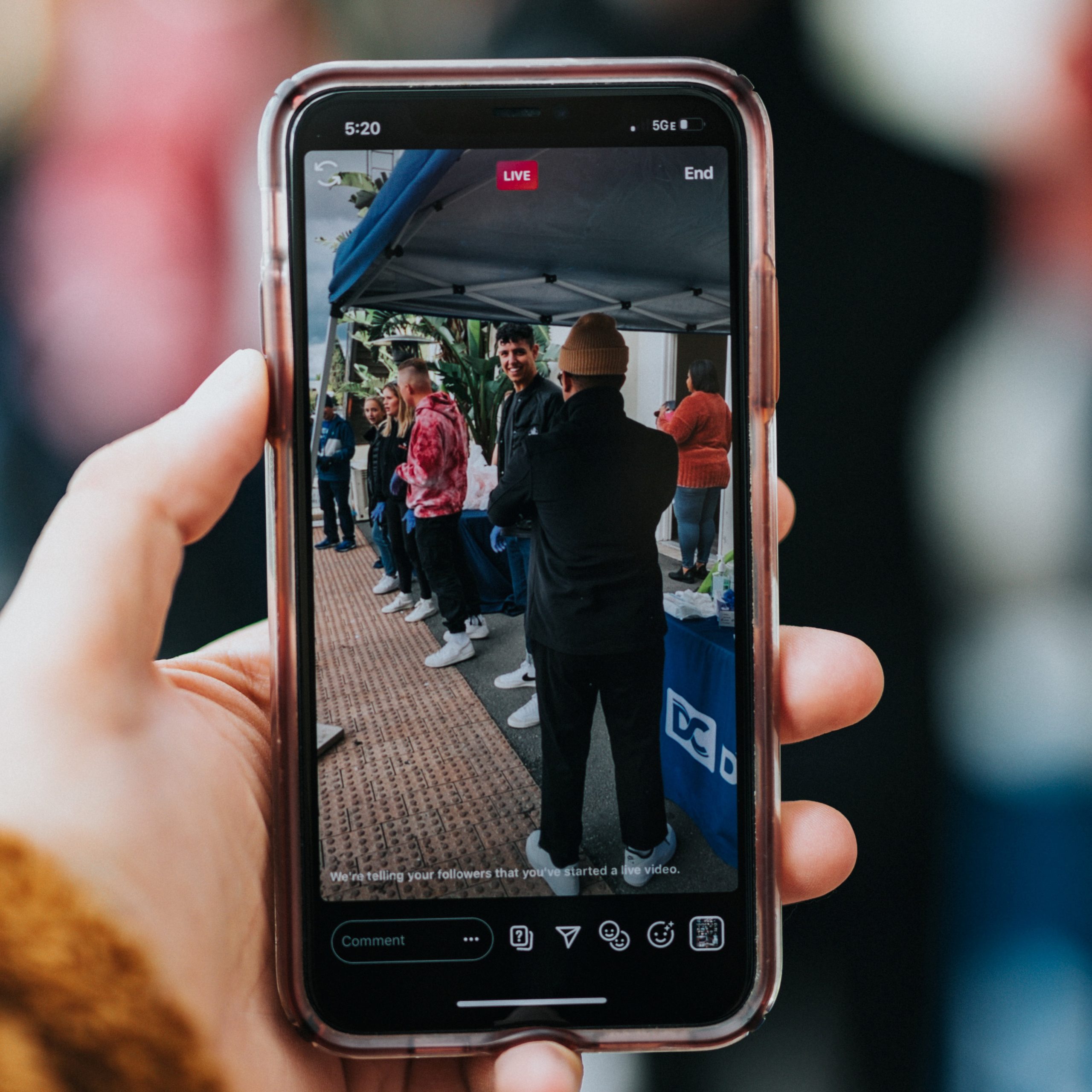
At the height of the COVID-19 pandemic, stay-at-home orders and social distancing drove hordes of Americans to their devices to connect with family and friends. It also helped fuel more online purchases that might typically have been made in-store. Cue the rise of shoppertainment – a phenomenon at the intersection of online shopping and influencer livestreaming that brands are eager to leverage, emboldened by the success live-streamers have found across Asia-Pacific.
As an integrated communications and media firm that has remained at the forefront of marketing innovation since inception, MMI is uniquely qualified to support brands through this latest evolution of commerce. After digging into performance data, examining industry reports, and speaking with brands and influencers, we have compiled a quick start guide to help your brand execute a winning influencer livestream campaign.
Shoppertainment in the digital age is the latest way brands utilize influencers to make the social shopping experience more entertaining and authentic. Shoppertainment rests on influencer livestreaming, which is often less polished than the slickly-produced shorts created by brands and influencers for official campaigns. For leaders worried about brand safety and consistency across platforms, this imperfect content might be troubling. But Caroline Vazzana (@cvazzana), style influencer, says the imperfection of livestreaming is its charm. “The beauty of going live is that not everything needs to be (or can be) perfect!”
At MMI, we love helping brands connect with their target audiences in new ways and across new platforms. If you’re planning to tap into growing trends that can positively impact your bottom line, like livestreaming, our influencer marketing team has the experience to support you..
Livestreams Sell Out the Digital Shelf in China
In 2020, the shoppertainment took off in China; two-thirds of Chinese consumers purchased products via livestreams that year. During Taobao’s 2021 Single’s Day, China’s unofficial shopping holiday that is four times larger than Black Friday in the U.S., China’s two most famous livestreaming stars sold a total of $3 billion worth of products via separate livestreaming sessions. The verticals driving this success in China are cosmetics, beauty products, fashion, and food.
Influencer livestreaming is gaining traction, as evidenced by increasing viewership and conversion rates. Per Bloomberg, social commerce is expected to accelerate over the next few years, with U.S. sales reaching $1.2 trillion by 2025.
Instagram and TikTok Take Center Stage
Initially a photography-focused app, Instagram now prioritizes video content to keep up with its competitors, most recently with the introduction of Instagram Live Shopping. MMI facilitated a collaboration between a large skin care brand and beauty and lifestyle influencers Paola Matute (@paox33) and Melody Acevedo (@melodyslife) to promote holiday season self-care products via Instagram Live. 44% of Instagram users shop Lives weekly, making them an effective way to place your product directly in front of consumers.
Brands are also finding success on “the QVC for Gen Z,” TikTok Live, whose “Top LIVEs” category makes it easy for live content to be discovered by users on the platform. MMI executed a TikTok Live on behalf of a major hair care brand, hosted by Vazzana, to promote an innovative new hair styling product line. Viewers chatted with Caroline during the session and posed questions that she answered live, creating an interactive environment for viewers. Click-through rate to the brand’s product page exceeded campaign expectations.
Influencers can seamlessly livestream beyond social channels via a brand’s website by incorporating livestream shopping platforms like buywith and talkshoplive. This allows the audience to shop directly on the e-commerce site, along with the influencer, in real time, removing path-to-purchase friction, increasing engagement and boosting conversions. Large brands and publishers who are already livestreaming shoppable content across these platforms include Walmart, Buzzfeed and Hearst.
Best Practices for Lively Livestreaming
The world of influencer livestreaming can be daunting to brands that are accustomed to controlling every aspect of influencer content development. MMI’s philosophy for content creation is to give influencers “freedom within a framework” to do what they do best and create content they know their followers will engage. MMI compiled this list of tips to consider as you craft your influencer livestreaming strategy.
Go with the platform where your audience spends the most time..
Meet your audience where it’s already engaged to maximize the reach and life cycle of your content.
Go with someone your audience trusts.
87% of Instagram users say influencers have inspired them to make a purchase. Collaborate with an influencer your audience already looks to for advice to drive conversions.
Go with someone you trust.
Identify creators you’ve worked with in the past who will understand the nuances of your brand as well as the required FTC and platform-specific disclosure policies.
Go with the content format your audience engages with most.
Examine past organic social and influencer campaign performance to determine the content type(s) with which your audience is more likely to interact.
Go with the platform where your audience spends the most time..
Meet your audience where it’s already engaged to maximize the reach and life cycle of your content.
Livestreaming, shoppertainment, and social commerce are new domains for today’s brands. To drive results, they will need to get comfortable with leaning on influencers and ceding creative control where necessary. We’ve found, though, that the best collaborations occur when influencers are given the freedom to create what works for their audiences. Acevedo affirms that the resulting livestream “feels authentic, yet informative for the audience.” When you’re ready to see influencer livestreaming work magic for your brand, MMI’s influencer marketing team is here to support you every step of the way.
See how MMI helps brands break through the noise and stand out here.
MMI Agency is a modern brand lab where performance meets possibility. Our mission is to inspire action by combining our end-to-end approach to reaching consumers with our tenacity for data.
Related
Articles
In the News, Marketing Frontiers, Press Releases
May 13, 2025
MULTIVIEW LAUNCHES AUDIENCEVIEW: THE ONLY FIRST-PARTY B2B AUDIENCE DISCOVERY PLATFORM FOR ASSOCIATION MEDIA

Acquisition, In the News, Press Releases
May 06, 2025
Stagwell (STGW) Acquires Experiential Marketing and Creative Agency JetFuel

In the News, Marketing Frontiers, Press Releases, Stagwell Marketing Cloud
Apr 02, 2025
The European Commission Expands its Partnership with UNICEPTA by PRophet to Include Media Analysis

Newsletter
Sign Up
By
Kaitlyn Schembri
Contributor, Koalifyed
CONTACT
hello@stagwellglobal.com
SIGN UP FOR OUR INSIGHTS BLASTS
With the advent of social commerce, influencers have never been more important. Global sales driven by social commerce will triple to $1.2 trillion by 2025. At the same time, user-generated content is on the rise, accounting for 39% of weekly media hours consumed by Americans. We’re living in the age of nano-influence, driven by the professionalization of the Creator Economy and brand investments in social commerce.
In the old days of influencer marketing, celebrity partnerships were strong drivers of top-of-funnel marketing. A-listers like Betty White gave brands wide-ranging exposure. No wonder brands lead with celebrities at the Super Bowl; on a stage with a hefty price tag, leveraging talent with a built-in fan base makes sense. Salesforce’s recent Big Game ad with Matthew McConaughey was a memorable callback to his 2014 hit “Interstellar.” It likely did little to drive conversion when it aired but drove conversation for days afterward.
With the rise of social commerce and performance measurement, creators boast an enviable position in today’s brand marketing playbook. In-app social marketplaces that let consumers shop the entire funnel on Instagram and TikTok mean the power of a single influencer post holds more weight than ever before. Consumers no longer need to see your website to make a sale – and it’s likely they don’t want to!
Nano-influencers are today’s driver of commerce. TikTok, more than any other platform, is driving this trend. Over the past two years, TikTok has democratized the digital world, allowing creators to reach a large audience on the app without a substantial following (and, in some cases, hardly any following at all). The algorithm prizes discovery over drudgery, priming niche content and creators with fewer than 10K followers to capture eyeballs (and results).

In this landscape, nano influencers are an authentic way for brands to connect with consumers. Frequently the tastemakers and thought leaders of their niche communities, they command the respect of small but mighty followings. Consumers are more likely to view them as friends than other-worldly celebrities, adding trust and engagement. Studies have shown that while 3% of consumers would consider buying a product in-store if promoted by a celebrity, that number jumps to 60% for a nano-influencer.
Dunkin’ recently tapped into various influencers with fewer than 50,000 followers to power its latest “coffee-first” campaign. Analysis showed nano-influencers generated higher engagement rates, with an average engagement rate of 5.2%. Dunkin’ succeeded in organically growing a support base for its coffee ambitions.
Nano influencers also can help brands drive a positive impact on diversity & inclusion. Being purposeful in curating your influencer marketing partnerships can ensure your brand does its part in platforming diverse perspectives. Consider how nano-influencers from yet-unengaged segments might supplement your core marketing activities for major product launches. Launching a new foldable exercise bike for the WFH generation? Consider partnering with TikTok influencers who produce content on career acceleration for P.O.C. talent. You never know what content may come of the effort!
As nano influencers proliferate marketing campaigns, it’s critical brands have agile, scalable solutions for influencer marketing management. Creators should be natural extensions of the marketing team. Investing in the right tech to reach, negotiate, and communicate with them is essential for success in this era of super-charged social commerce.
When leveraging the power of nano influencers, do not overlook the vetting process. Brand safety controls are key in the wild west of today’s platform-fragmented internet, as is closely managing influencer spending. Many marketers fall prey to the hidden costs of fake follower bots on their influencer efforts, which threaten to diminish a campaign’s chances of success and harm trusted influencer relationships. Bot detection is vital to ensuring brands are getting the complete picture. At Koalifyed, we leverage our platform’s built-in S.N.I.F.F. technology to help brands reach a higher R.O.I. for their influencer marketing investments.
We hear success stories every day from brands utilizing nano-influencers to hit their marketing KPIs. We predict the gap between the brands who invest in this strategy versus those who don’t will only widen in the coming years as platforms double-down on social commerce development and authentic brand marketing remains a priority for consumers.
Related
Articles
In the News, Marketing Frontiers, Press Releases
May 13, 2025
MULTIVIEW LAUNCHES AUDIENCEVIEW: THE ONLY FIRST-PARTY B2B AUDIENCE DISCOVERY PLATFORM FOR ASSOCIATION MEDIA

Acquisition, In the News, Press Releases
May 06, 2025
Stagwell (STGW) Acquires Experiential Marketing and Creative Agency JetFuel

In the News, Marketing Frontiers, Press Releases, Stagwell Marketing Cloud
Apr 02, 2025
The European Commission Expands its Partnership with UNICEPTA by PRophet to Include Media Analysis



